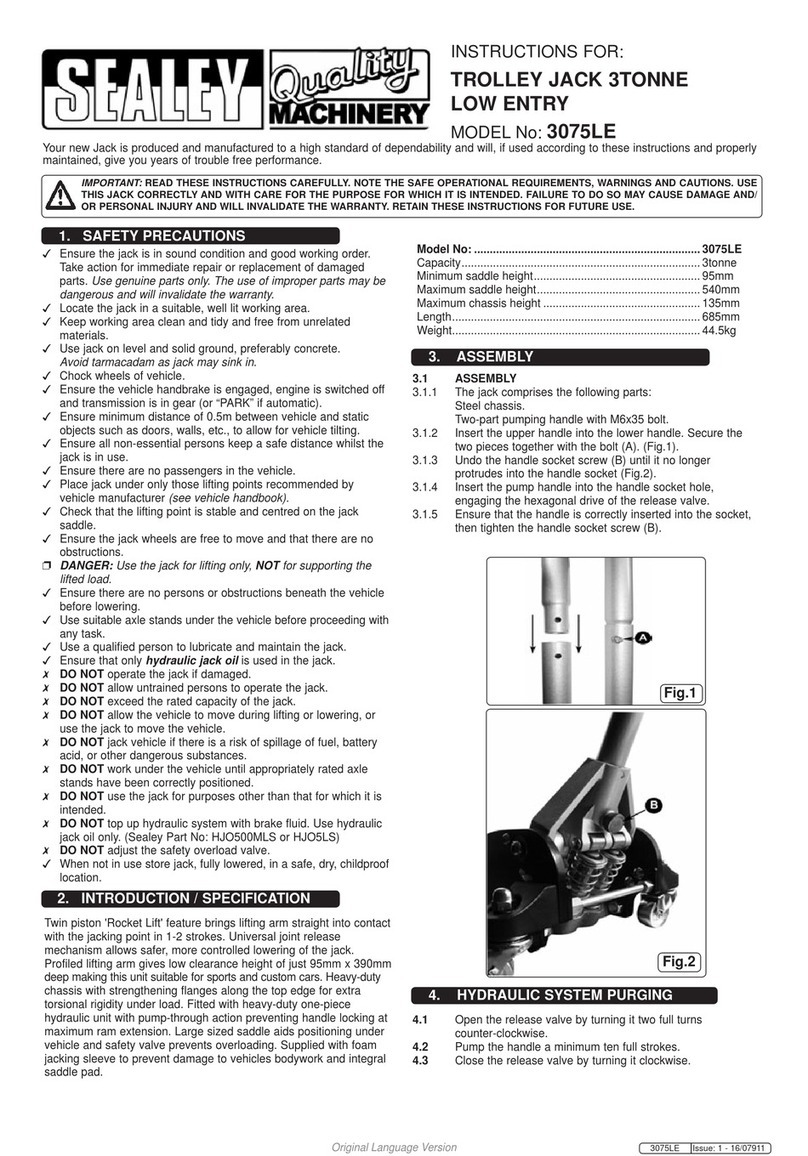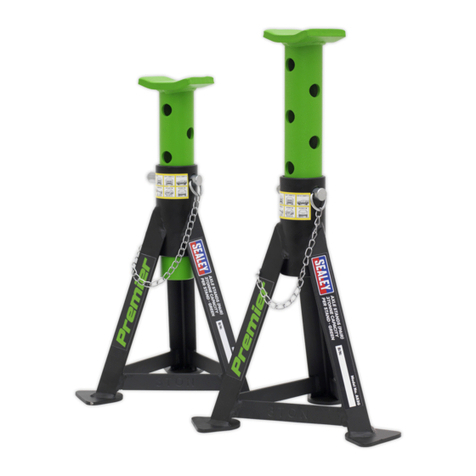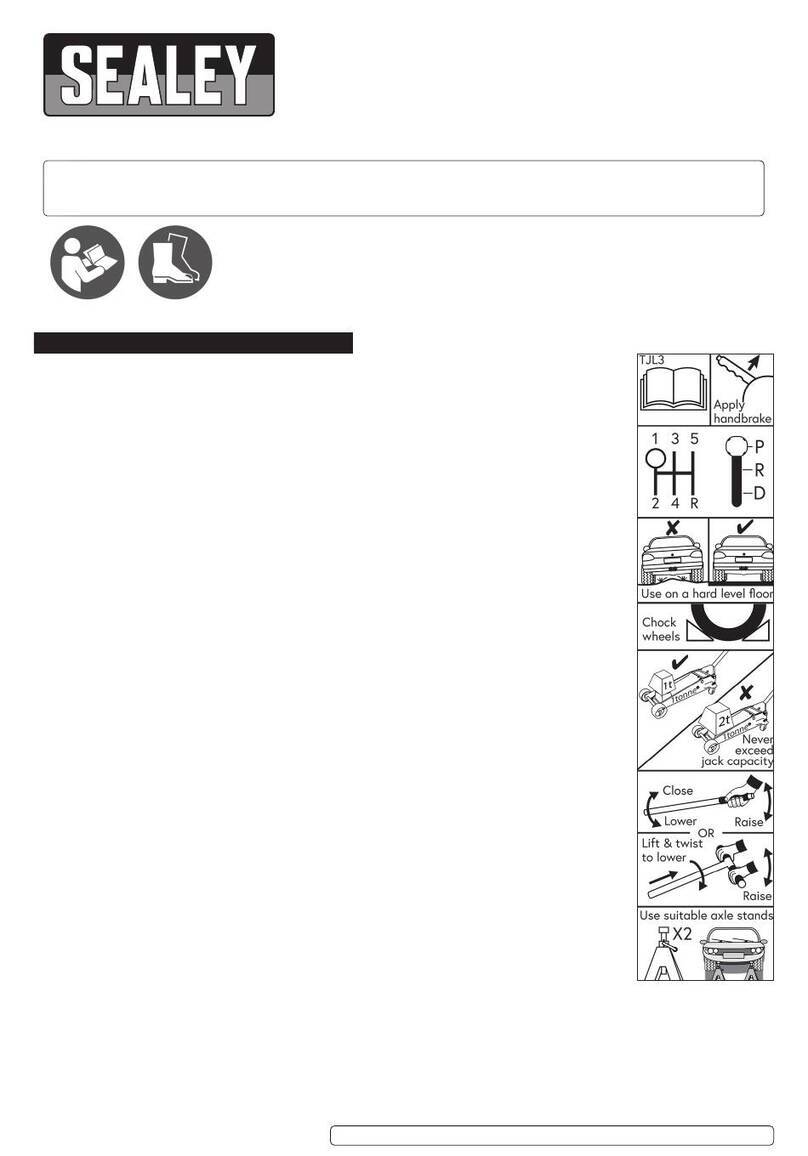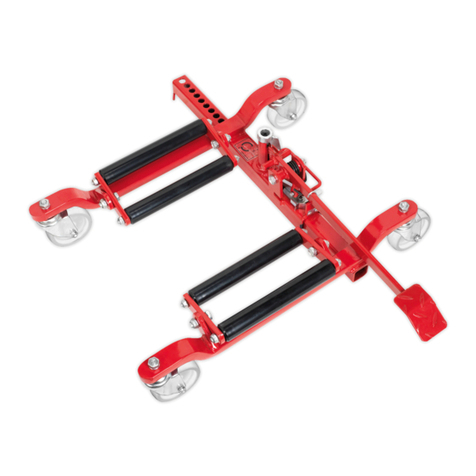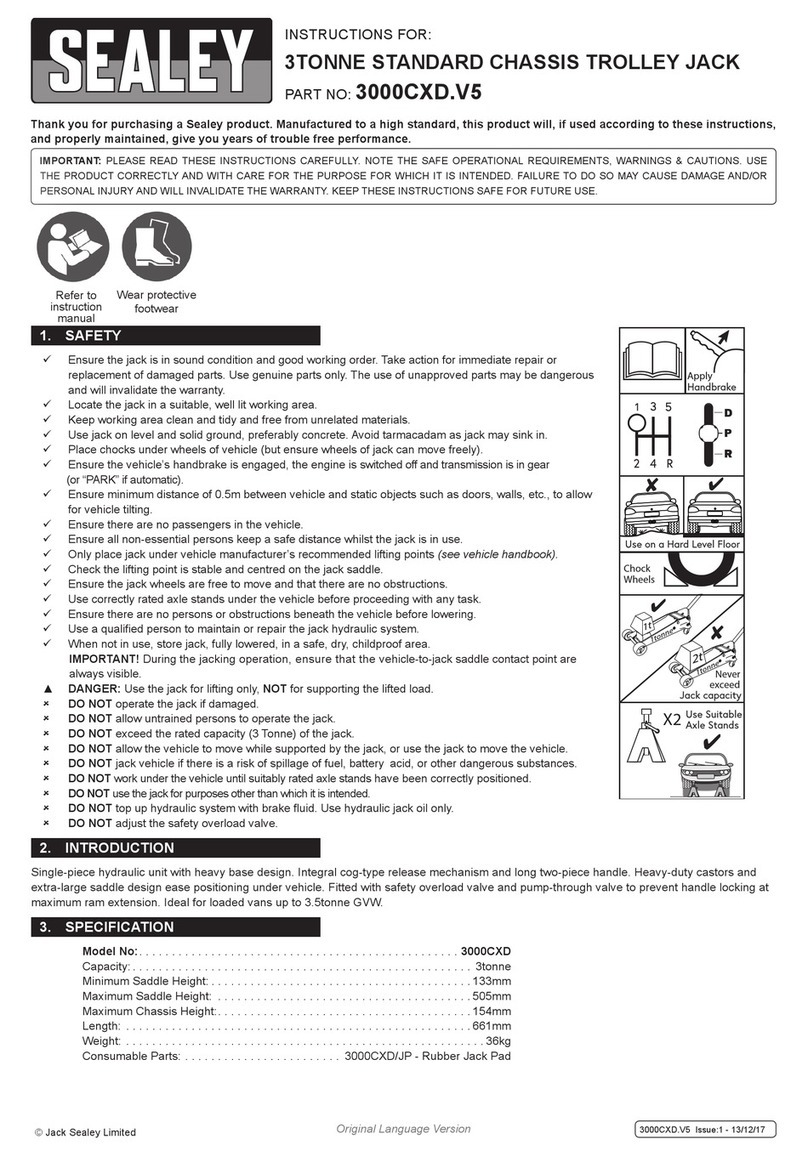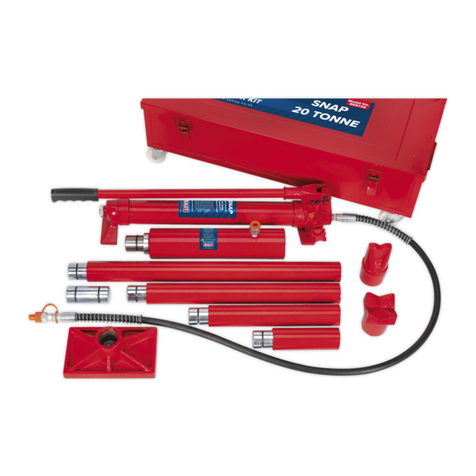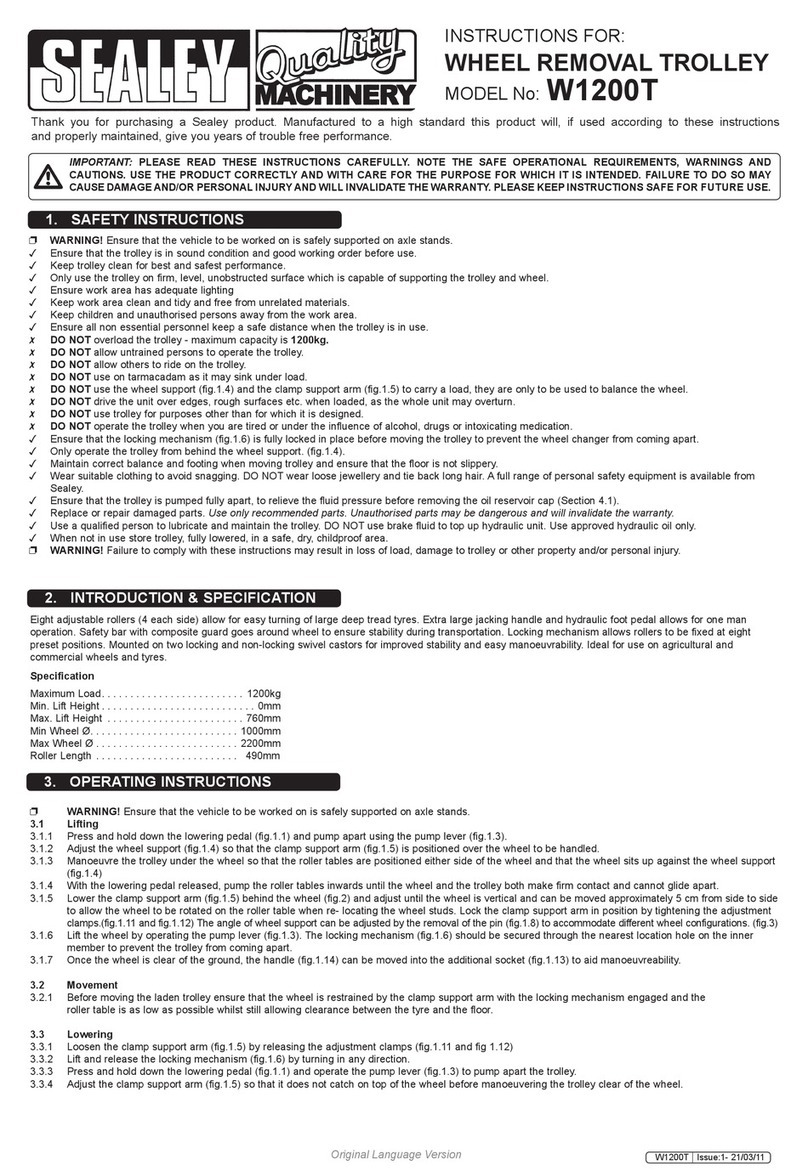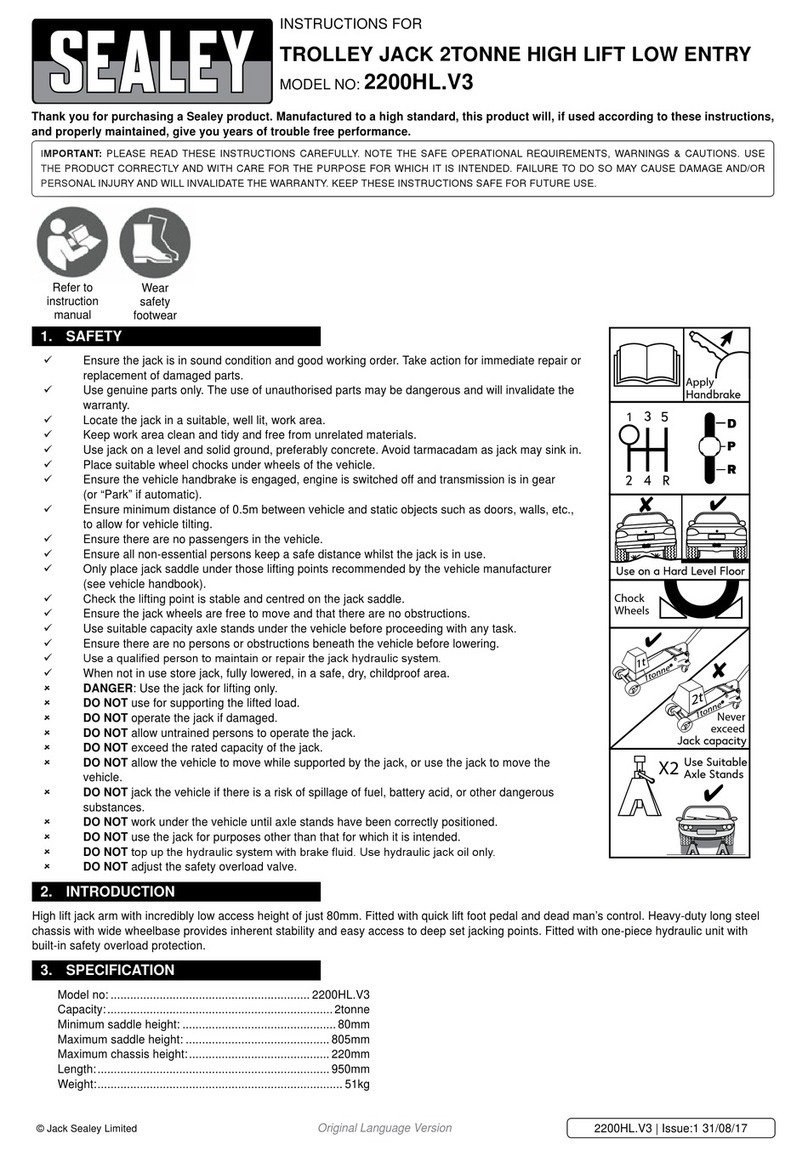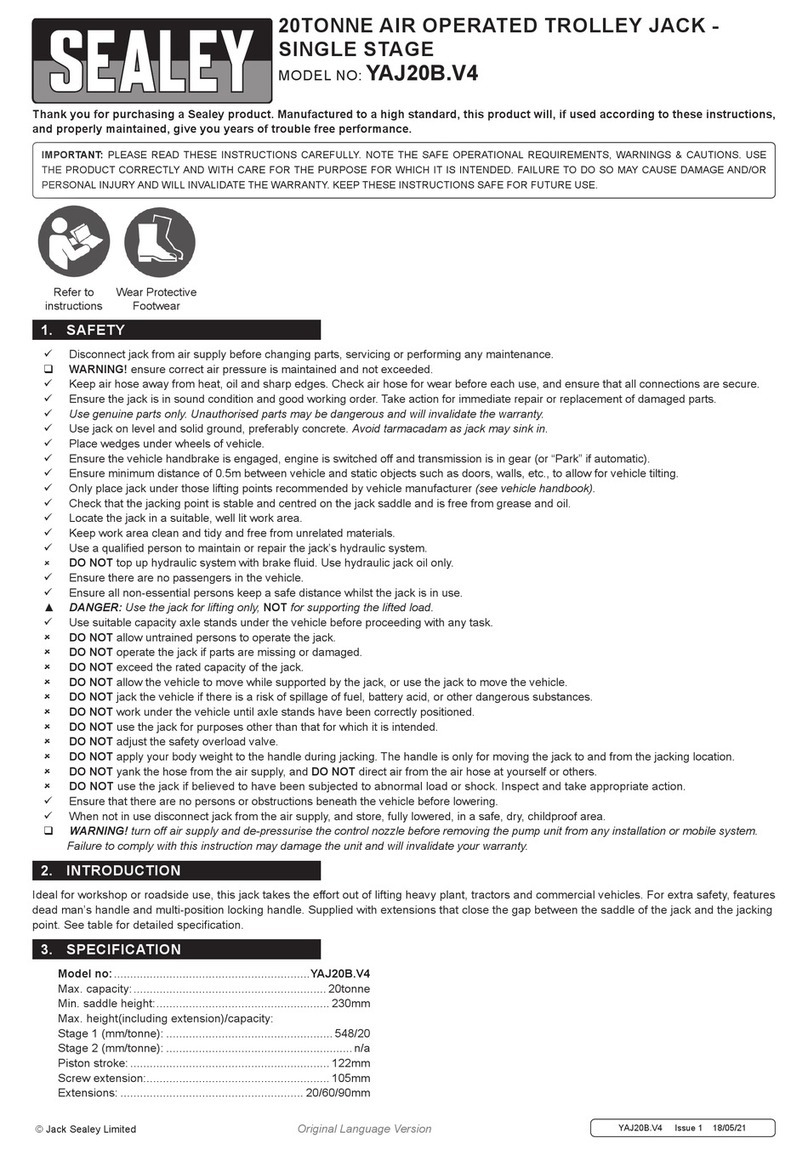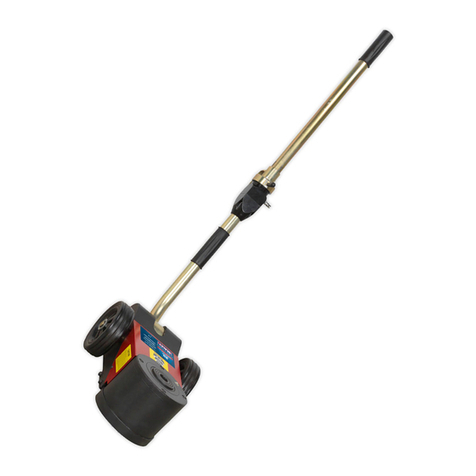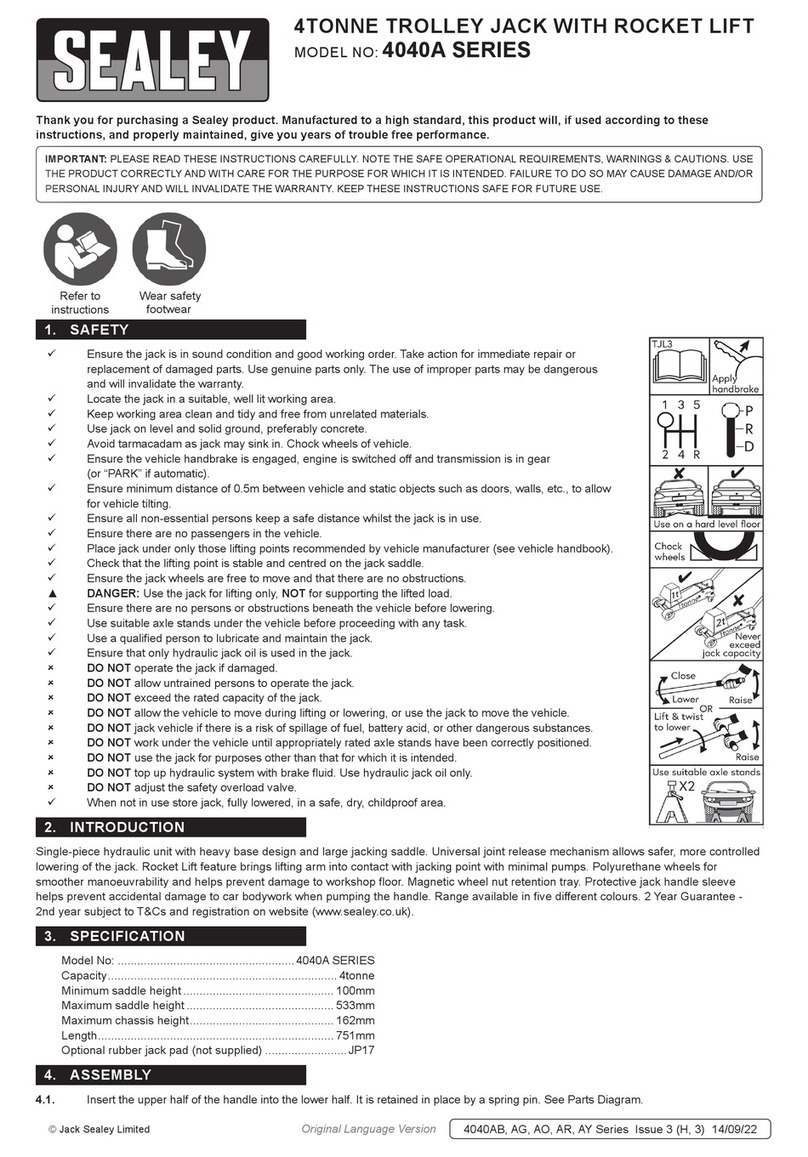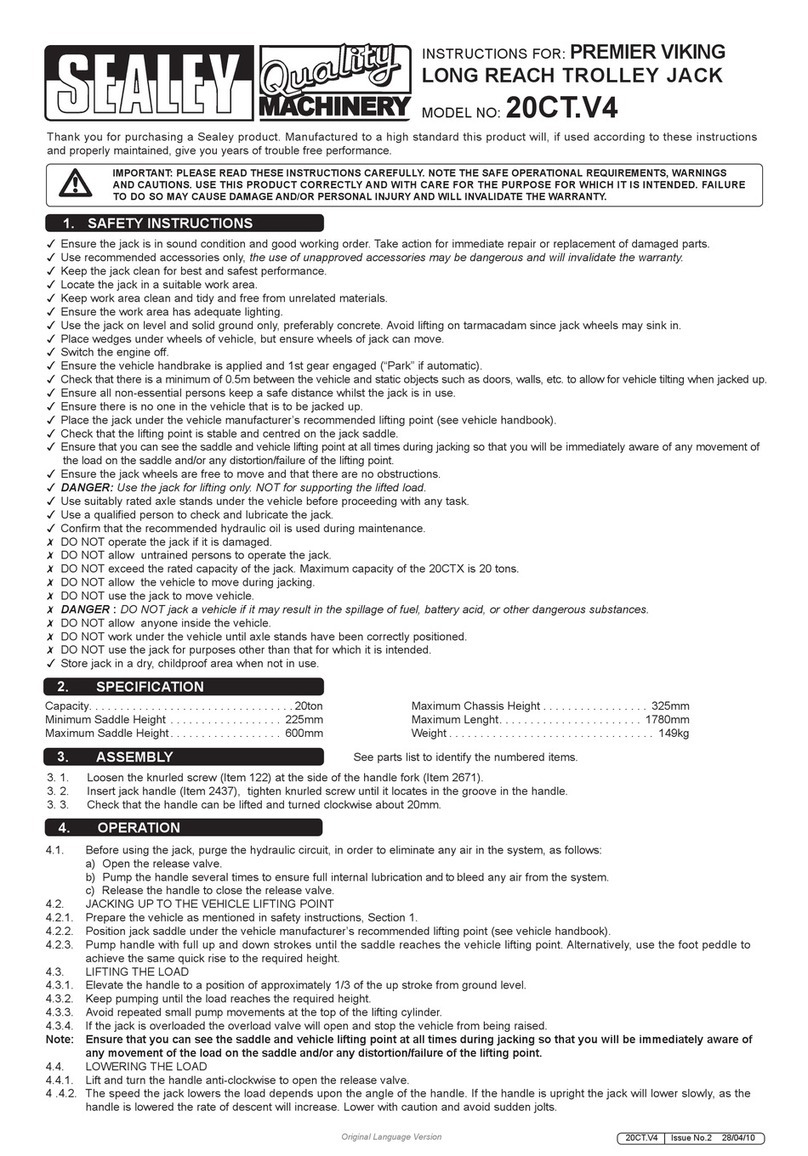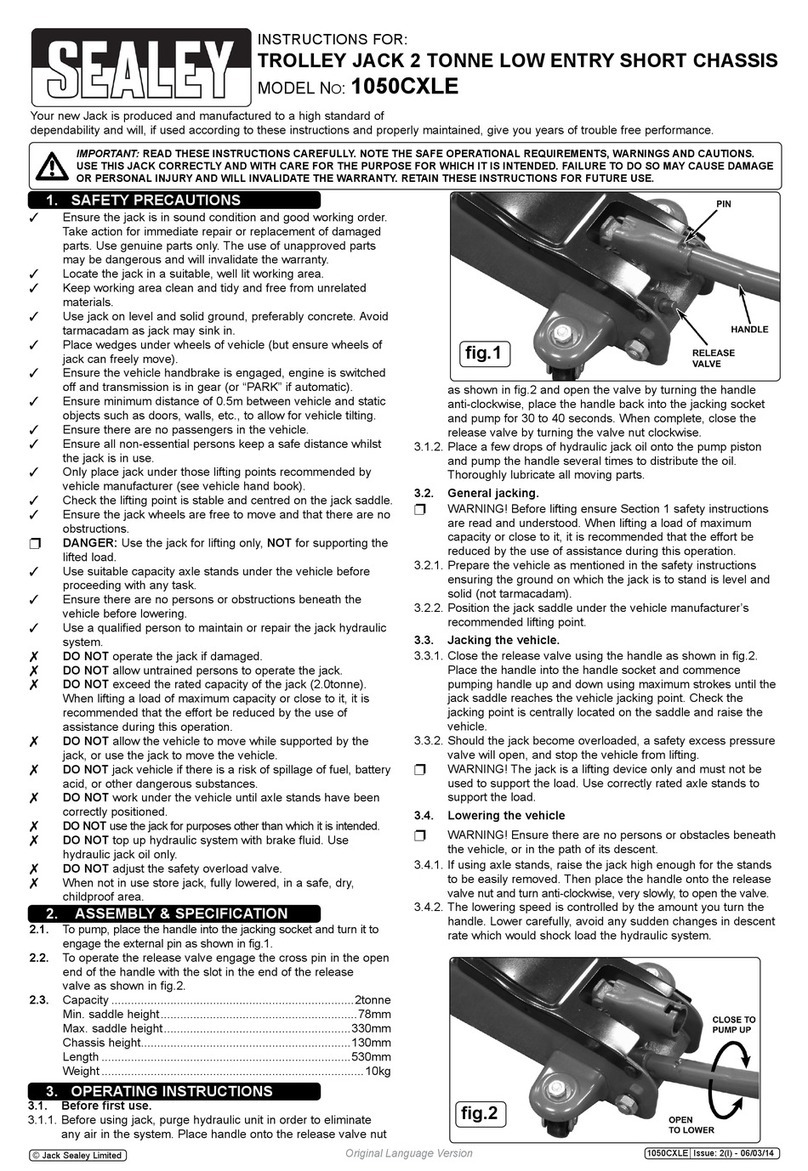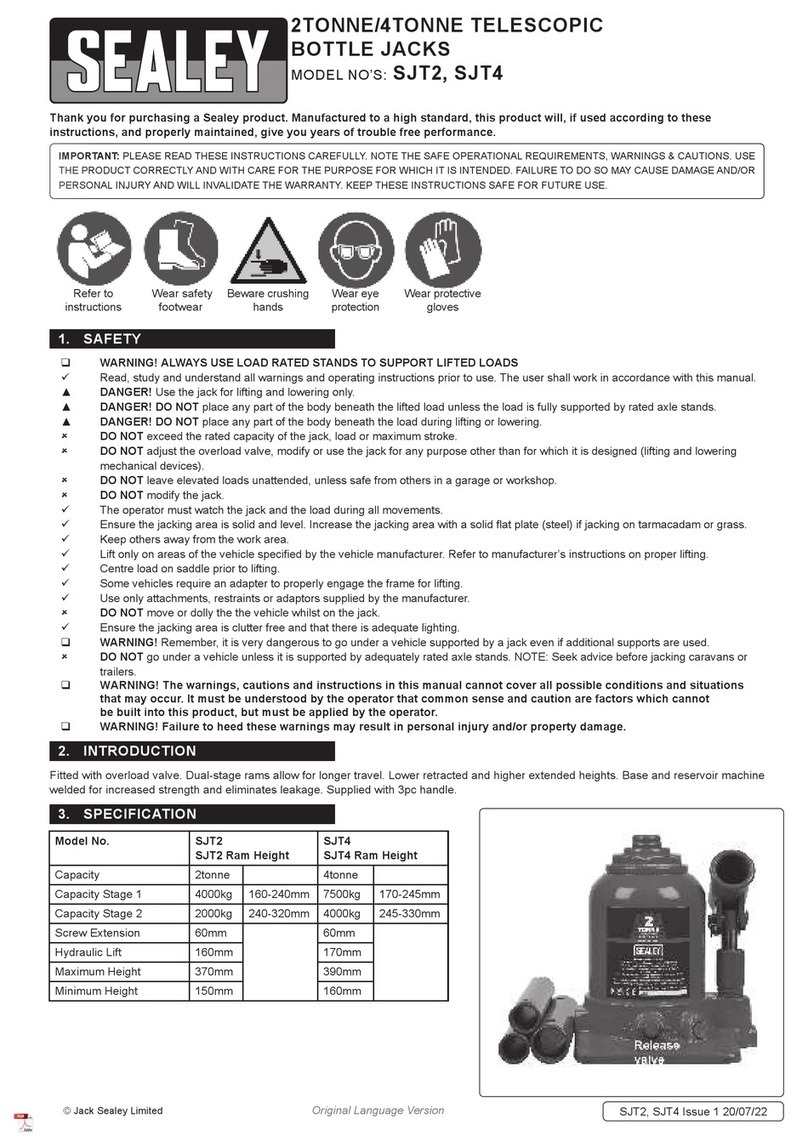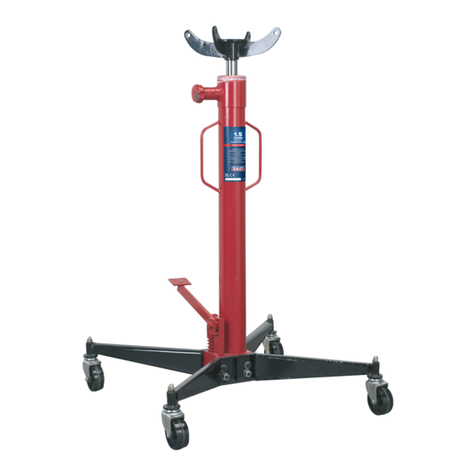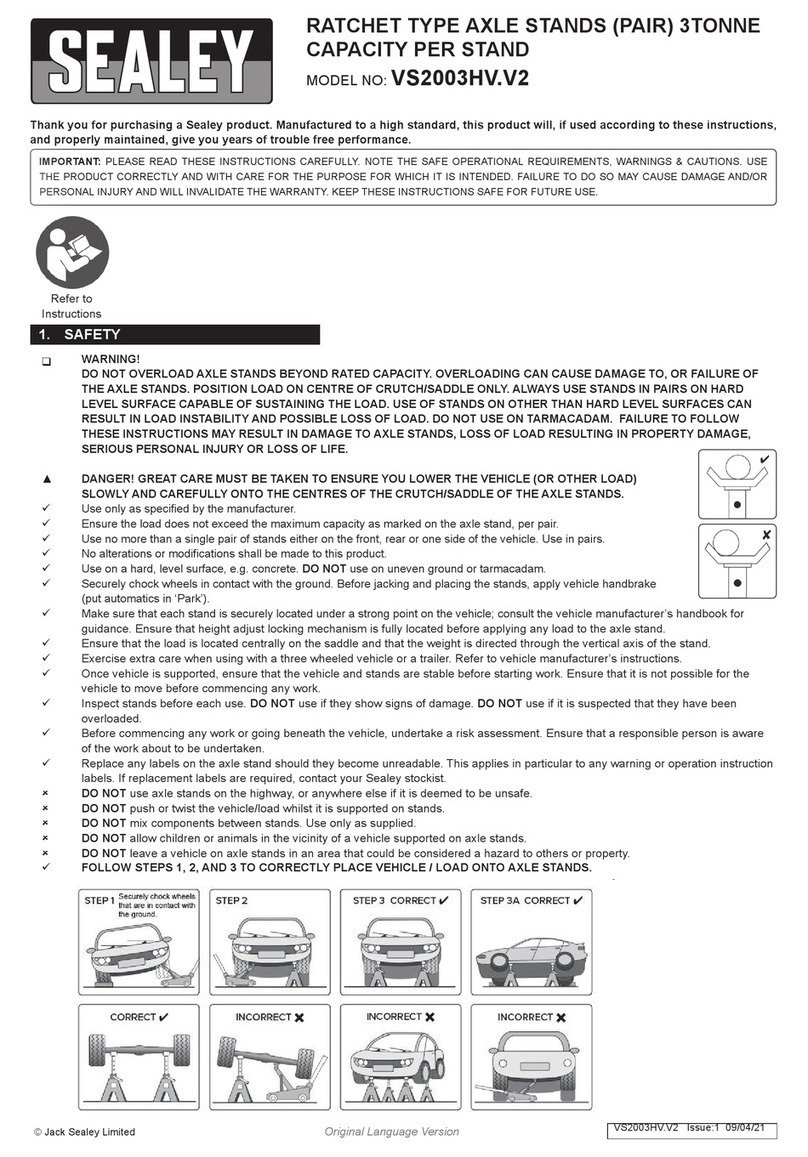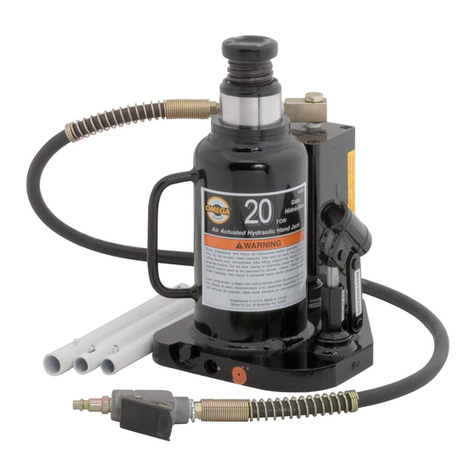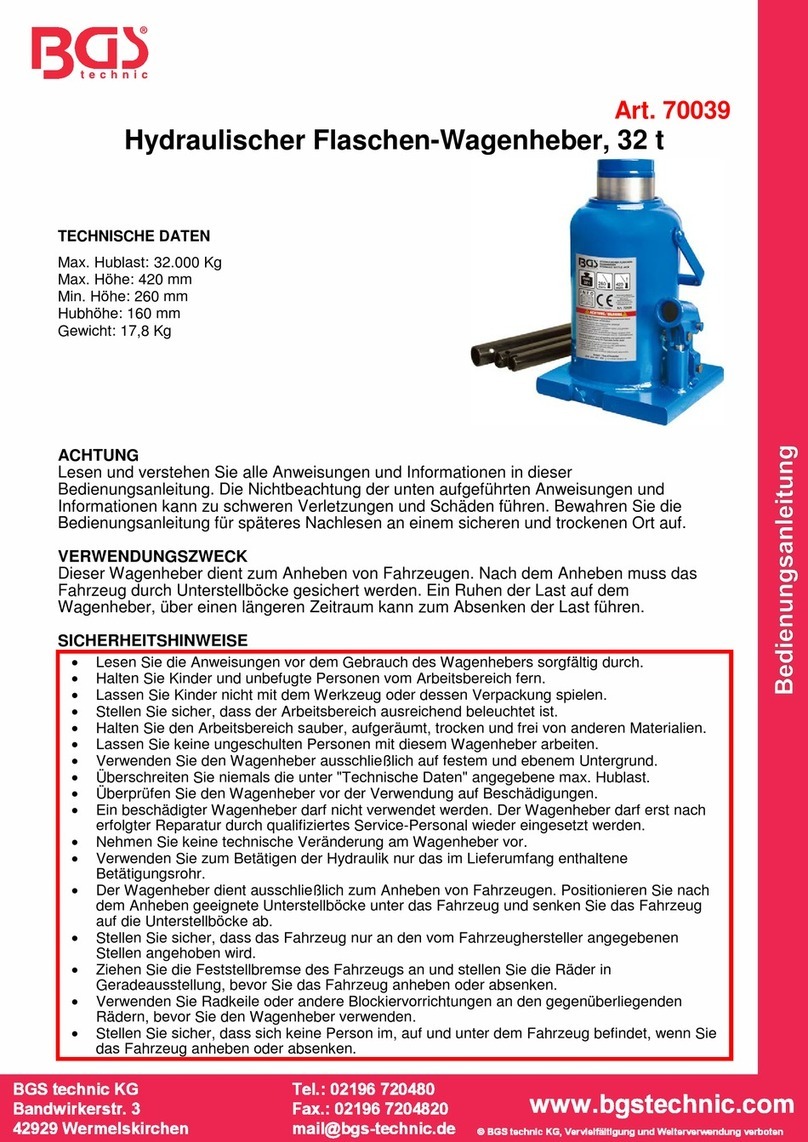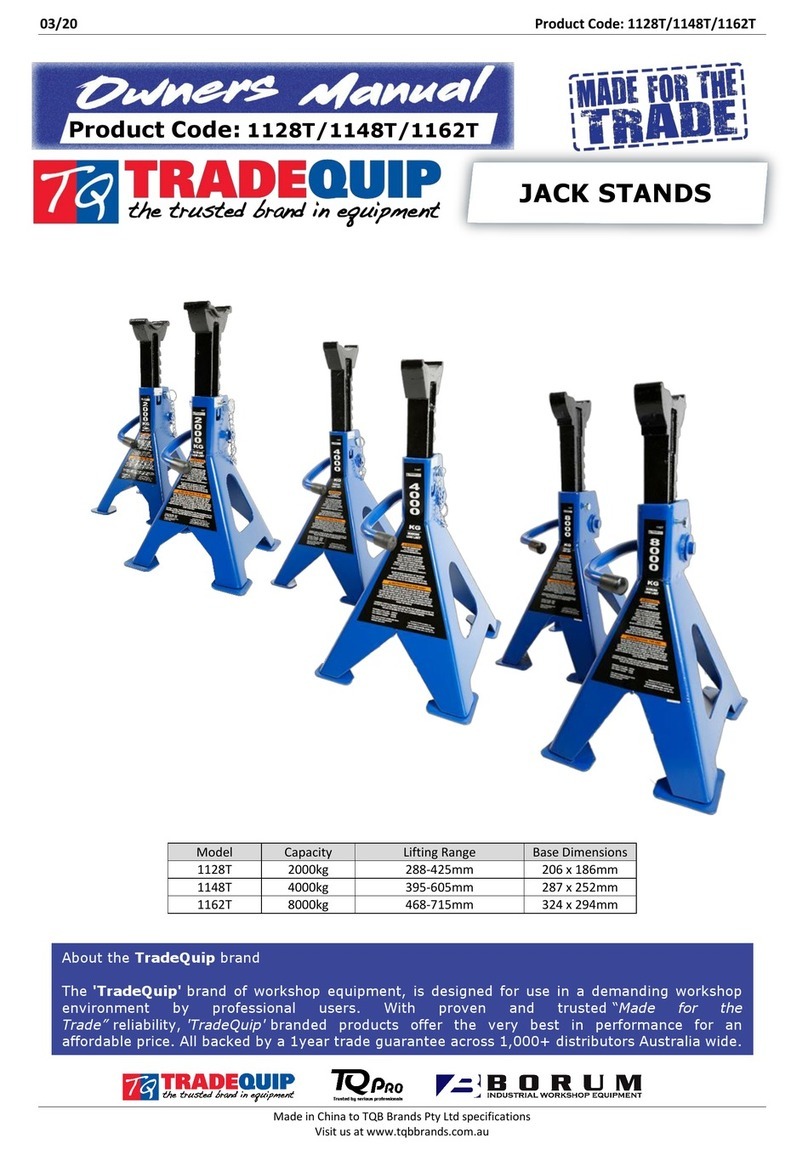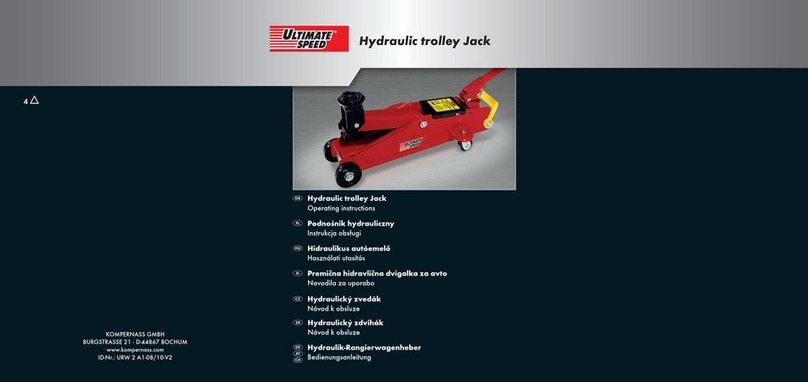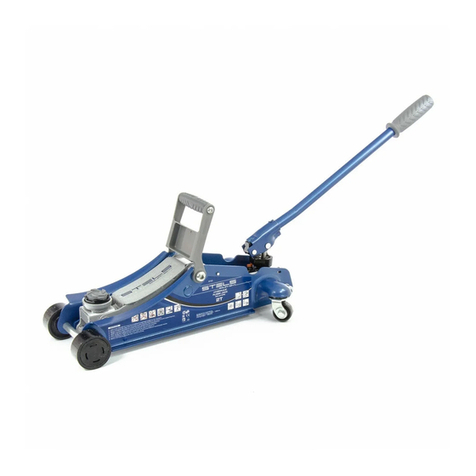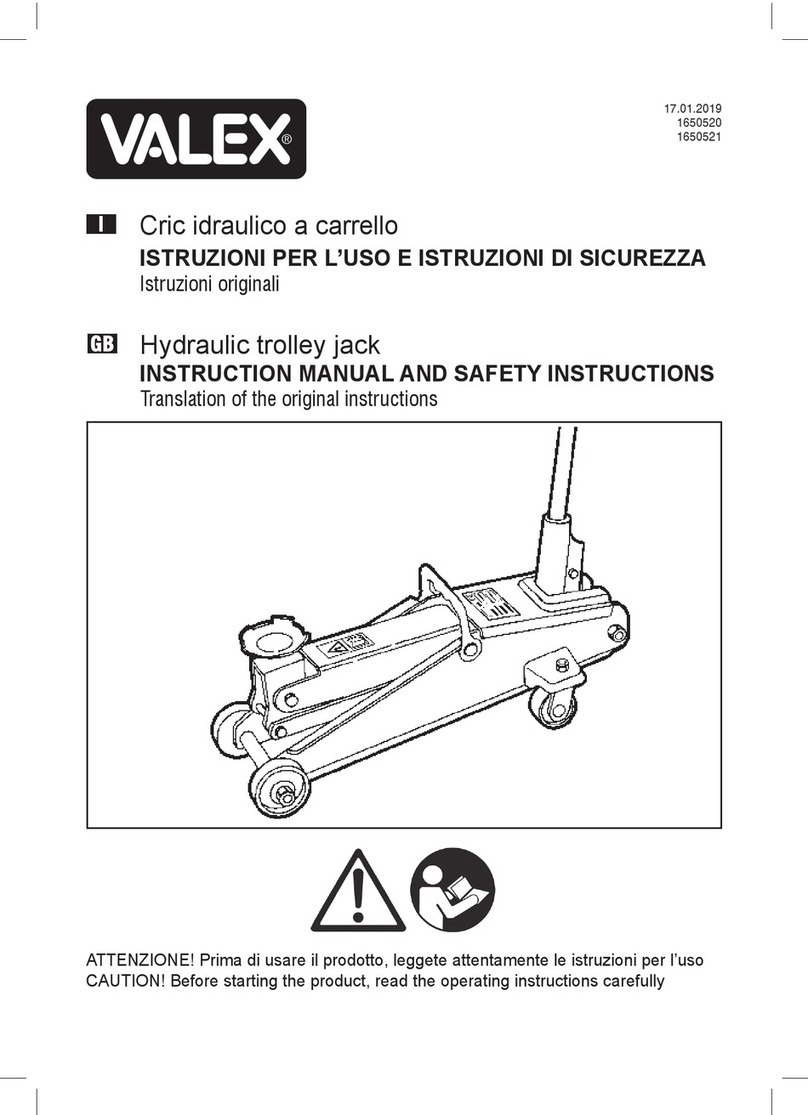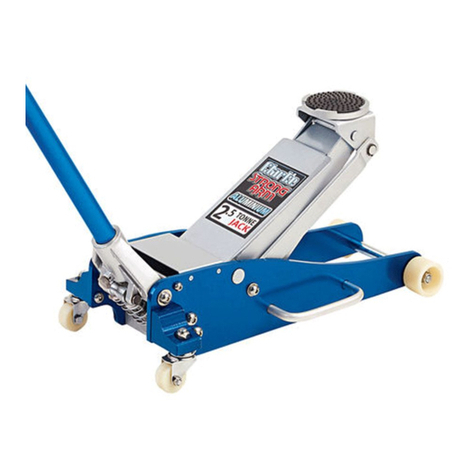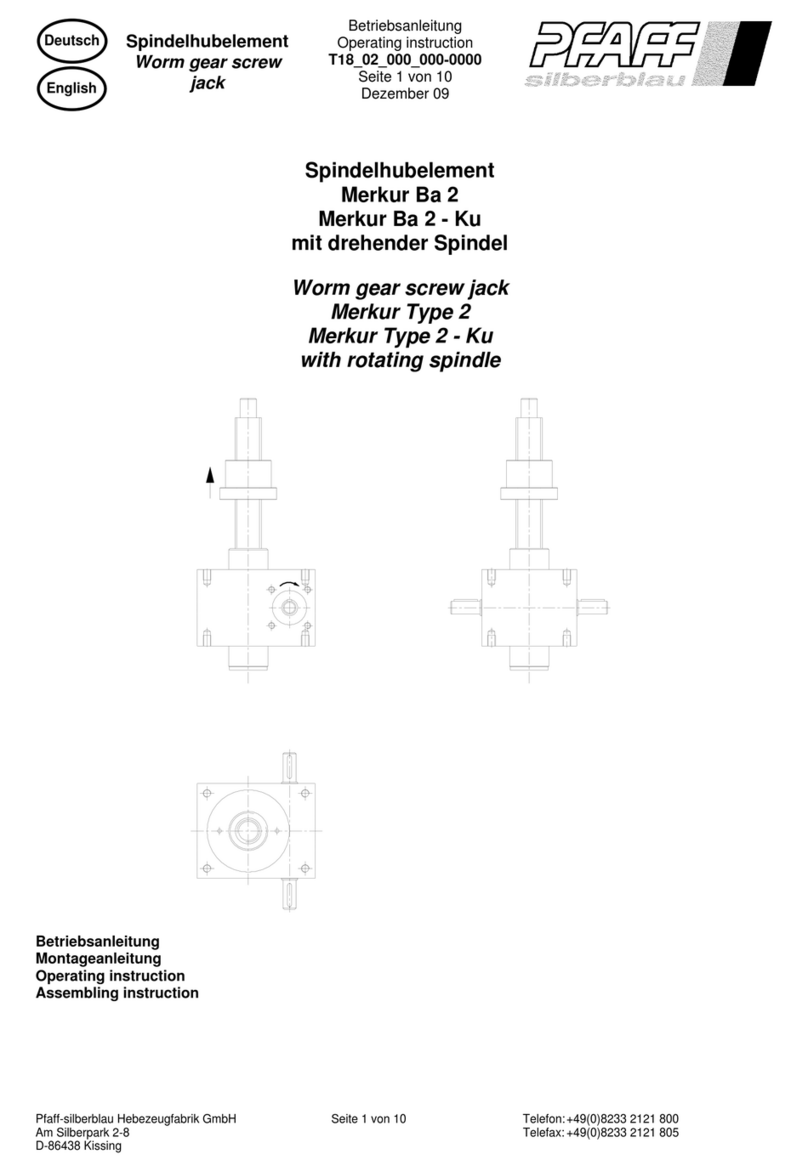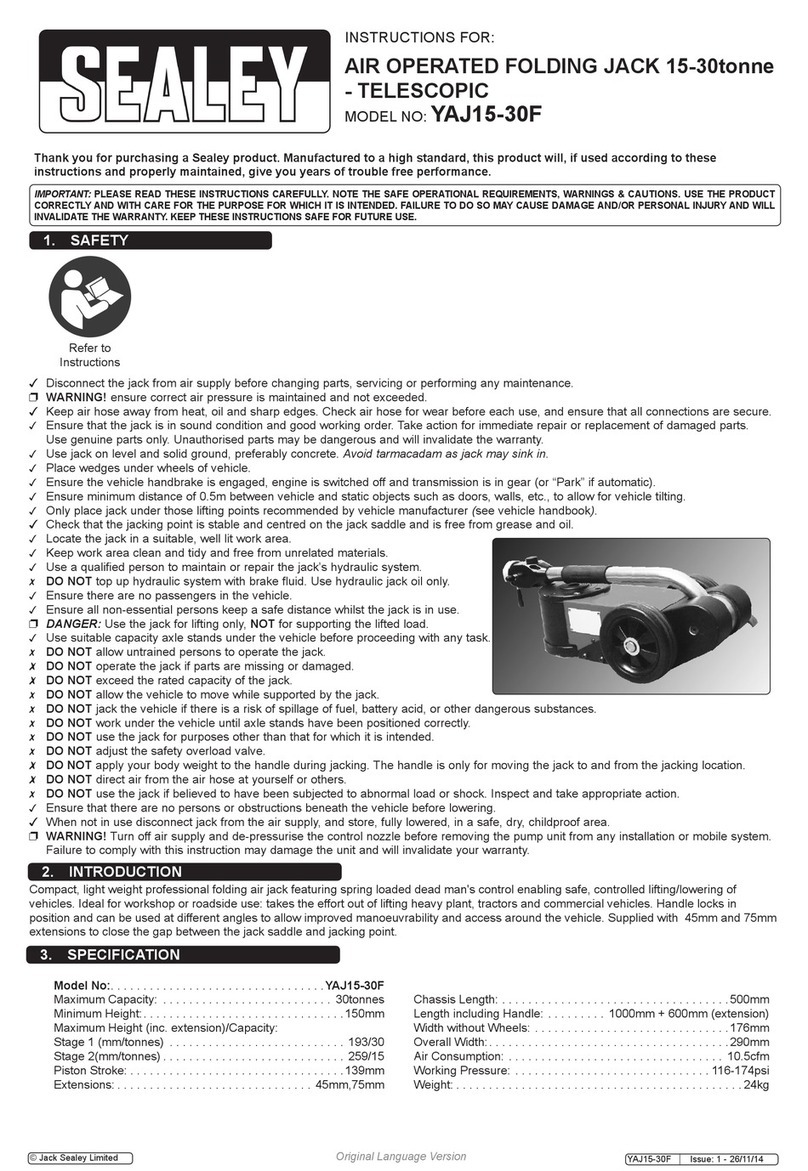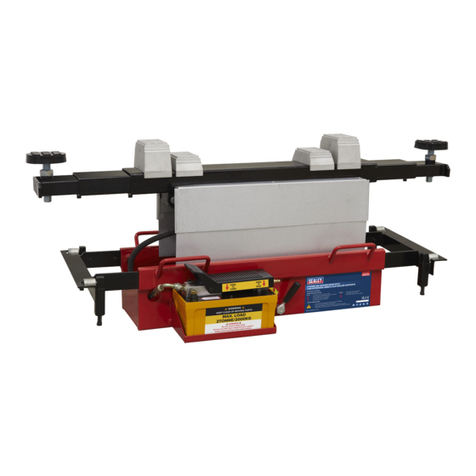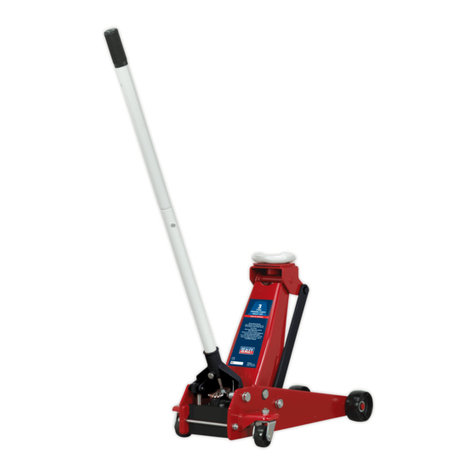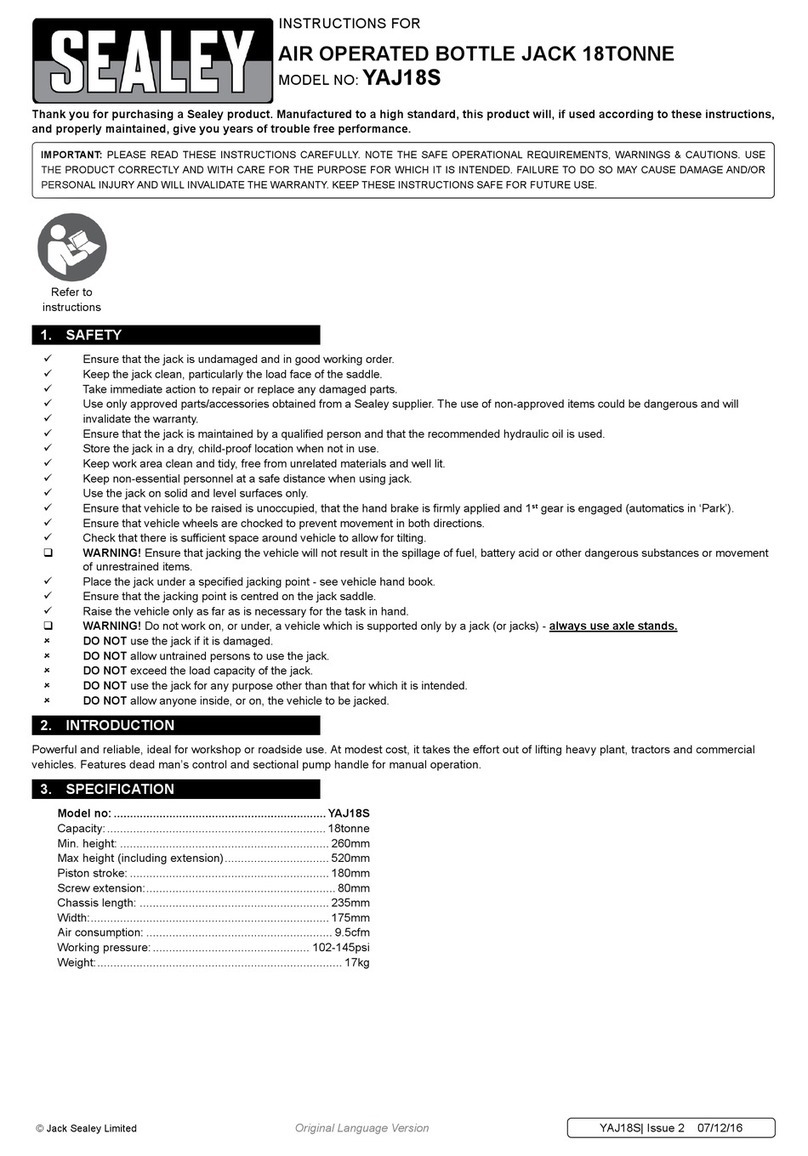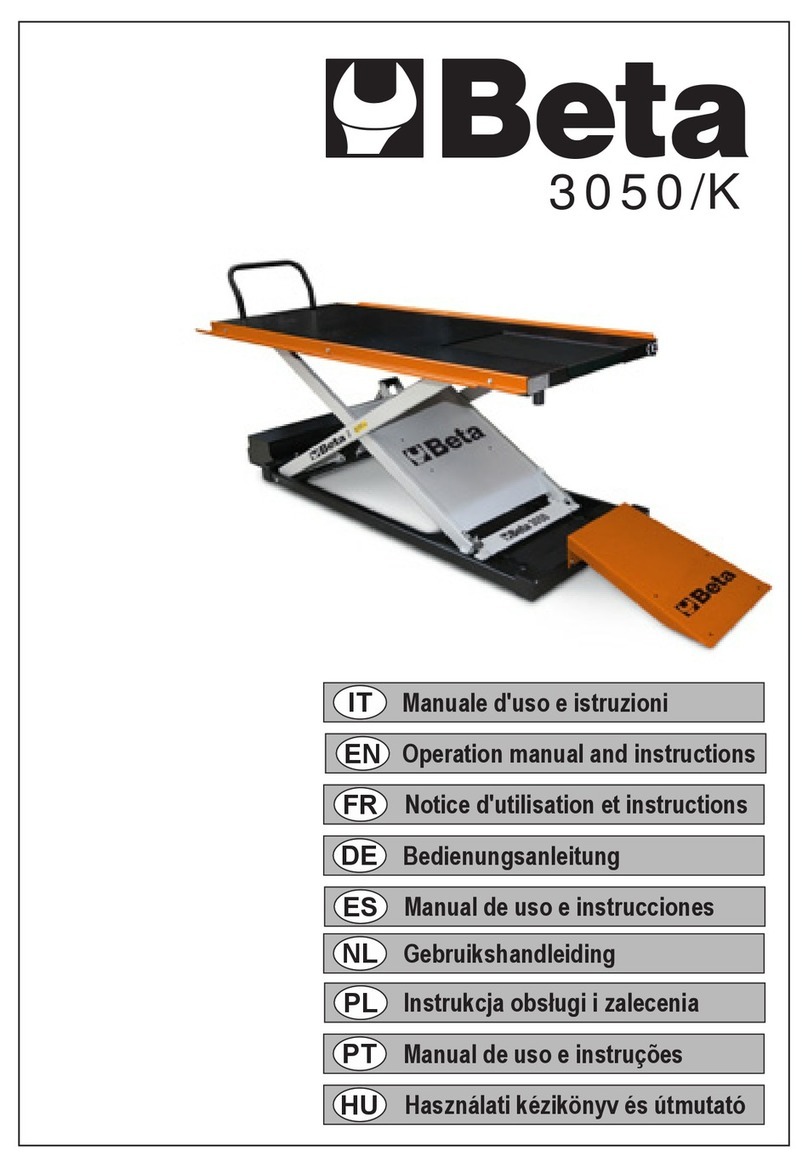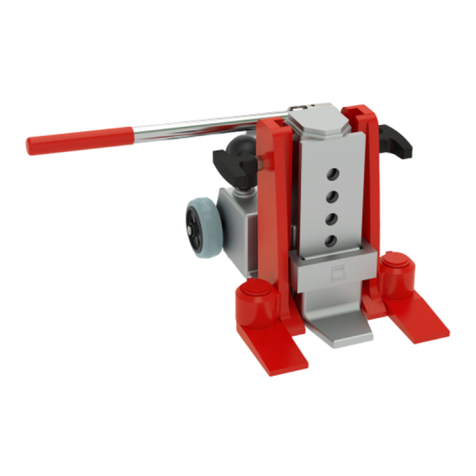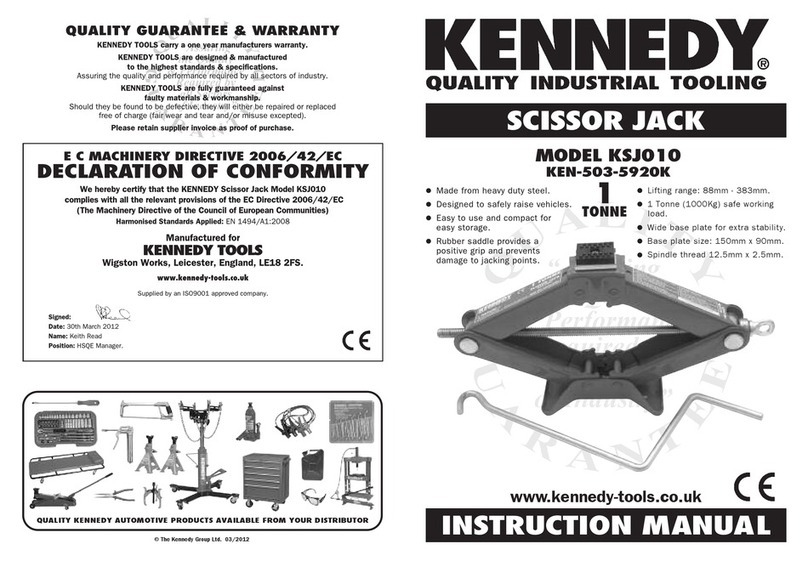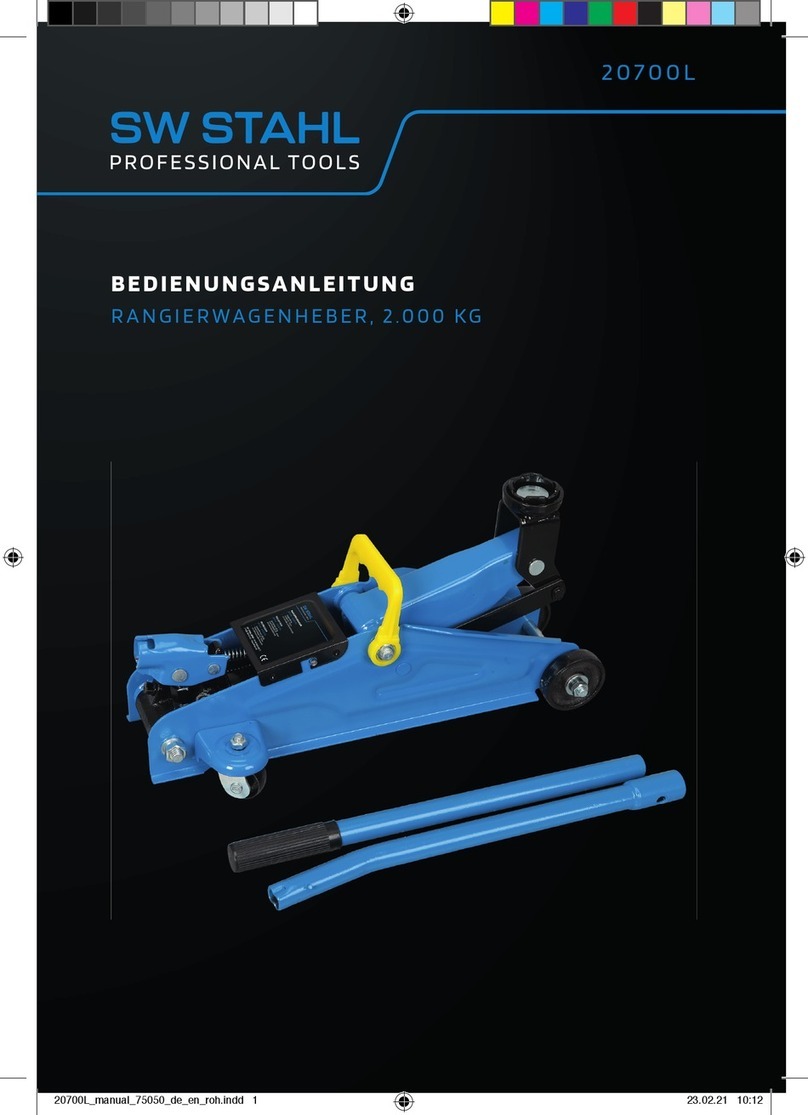
5. TROUBLESHOOTING
IMPORTANT: Only fully qualified personnel should attempt
maintenance or repair.
6.1 To bleed air out of the system, jack the beam to its top
position. Unscrew the oil filler screw, (see 'A' in fig.7). If air is
present a whistling sound will be heard. Lower the beam
until there is just enough clearance remaining to replace the
oil filler screw and do up tightly.
6.2 When not in use, the beam should be stored in the lowest
position, to minimise corrosion.
6.3 Keep the beam clean and lubricate all moving parts on a
regular basis.
WARNING: DO NOT use brake fluid, or any fluid other
than a good quality jack oil, such a SEALEY HYDRAULIC
JACK OIL, as this may cause serious damage to the
jack and will invalidate the warranty!
6.4 To check on fluid level and to top up, jack the beam to its top
position. Unscrew the oil filler screw, (see 'A' in fig.7) and top
up so that the level is about 3cm below the filler hole. Do not
overfill. Lower the beam until there is just enough clearance
remaining to replace the oil filler screw and do up tightly.
6.5 Before each use check for broken, cracked, bent, or loose
parts, or any visible damage to pump, saddles, lifting arms,
frame and all parts including nuts, bolts, pins and other
fasteners. If any suspect item is found, remove beam from
service and take action to remedy the problem. DO NOT
use the beam if it is believed to have been subjected to
abnormal load or shock load. Inspect and take appropriate
action.
6.6 Periodically check the pump piston and the ram for signs of
corrosion. Clean exposed areas with a clean oiled cloth.
IMPORTANT: NO RESPONSIBILITY IS ACCEPTED FOR
INCORRECT USE OF THIS PRODUCT.
Hydraulic products are only repaired by local service agents.
We have service/repair agents in all parts of the UK.
DO NOT RETURN JACKS TO US. Please telephone us on
01284 757500 to obtain the address and phone number of
your local agent. If jack is under guarantee you can also
contact your local dealer.
6. MAINTENANCE
PROBLEM POSSIBLE CAUSE REMEDY
Beam will not lift the load 1) Overloaded 1) Be sure to use beam with adequate capacity.
2) Oil level low 2) Top up oil level.
3) Release valve not correctly closed 3) Check and close release valve.
4) Air in system 4) See bleeding procedure in section 5.1 'Maintenance'
5) Piston rod not functioning 5) Clean and/or replace oil.
6) Packing worn or defective 6) Return to authorised service agent.
Beam does not lift high enough
or feels “spongy” 1) Oil level too high or too low 1) Fill or remove excess oil.
2) Worn seals 2) Return to authorised service agent.
3) Air in system 3) See bleeding procedure in section 5.1 'Maintenance'
4) Release valve not closed 4) Check and close release valve.
Beam lifts poorly 1) Pump packing or valves
malfunctioning
1) Return to authorised service agent.
2) Oil is dirty 2) Replace oil.
3) Air in the system 3) See bleeding procedure in section 5.1 'Maintenance'
Beam lifts but will not hold load 1) Release valve partially open 1) Check and close release valve.
2) Air in system 2) See bleeding procedure in section 5.1 'Maintenance'
3) Faulty seals 3) Return to authorised service agent.
4) Packing worn or defective 4) Replace packing.
Beam will not lower completely 1) Unit requires lubrication 1) Oil all external moving parts.
2) Piston rod bent or damaged 2) Replace rod or contact local service agent.
3) Beam frame/link system distorted due
to overloading/poor positioning
3) Replace damaged parts or contact local service agent.
4) Air in system 4) See bleeding procedure in section 5.1 'Maintenance'
5) Release valve partially closed 5) Check and fully open release valve.
Beam does not lower at all 1) Release valve closed 1) Check and fully open release valve.
Product disposal. If the beam eventually becomes unserviceable,
draw off the oil into an approved container and dispose of the
jack and the oil according to local regulations.
Fig.7
5.3.4 The saddles at either end are adjustable, and may be raised
or lowered by screwing clockwise or anticlockwise in order to
give the beam clearance from the underside of the vehicle.
5.3.5 Adjust the telescopic arms to line up the saddles with the
jacking points of the vehicle.
5.3.6 Turn the release valve clockwise (fig.1-1) and start to raise
the jack by operating the pump handle (fig.1-2). Raise the
beam in short increments and ensure the saddles are
centered on the jacking points.
5.3.7 Once you have established the setup is stable you may
proceed to lift the vehicle to the required height.
5.3.8 Make sure the locking lever is engaged, if it is not engaged
you need to raise or lower the beam to the closest locking
point and check the locking lever engages.
5.3.9 To lower the jack past a locking point you must raise the jack
a small amount and then turn the locking lever (fig.1-3)
clockwise whilst turning the release valve (fig.1-1) slowly
anticlockwise.
Original Language Version SJBEX200LP Issue: 3 - 16/10/09
